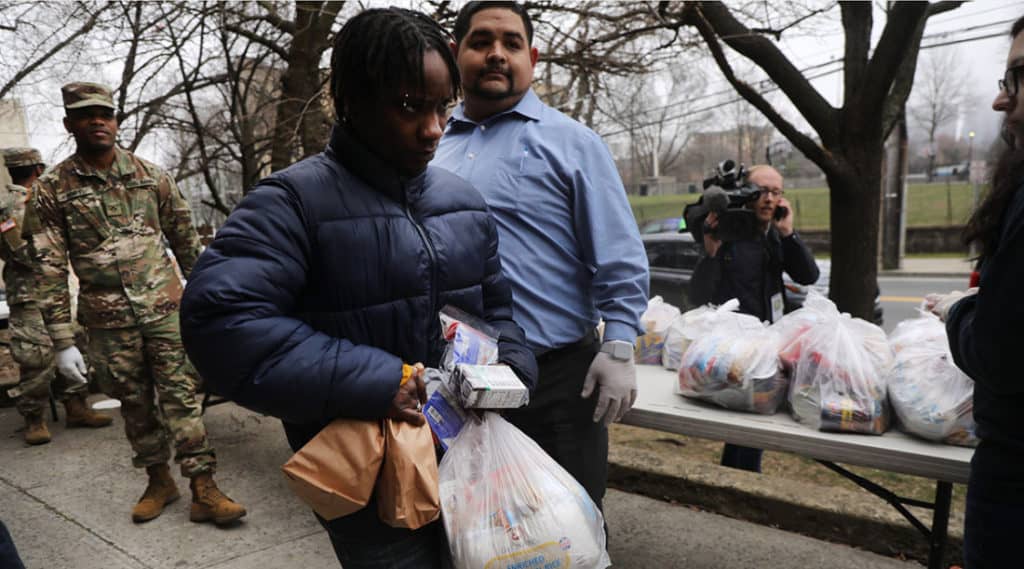We are living in an intense time, a time where public policy failures and social inequality are revealing themselves at a level that was hidden by a relatively strong economy. Over the last few years, record low levels of unemployment and a booming stock market helped to conceal the still weak level of assets, public infrastructure and the overall socio-economic fragility of most Americans. Many analysts of the economy did not recognize that though “the economy” had been in recovery for nearly ten years, most Americans have less wealth then they had prior to the Great Recession. A report last year from the Institute for Policy Studies noted that the median wealth in 2007 was $161,400 for White households and about $10,000 for Blacks and Latinos. In 2016 (the most recent year for which we have data), the median wealth for White households was about $150,000, while for Latinos and Blacks it was only at $6,600 and $4,300, respectively.
The coronavirus crisis is highlighting that individual assets are not enough. The lack of strong social infrastructures such as our weak public health, education, child care and unemployment benefits, etc. has left the nation one crisis away from bringing down the entire economy. Take for example school closures. Since March 12, local and state governments have been closing school districts to limit the spread and speed of COVID-19. There are now at least 50.8 million public school students who are home from school.
School closures were an essential and vital public health decision. Still, we had an under appreciated foundation of our public infrastructure upon which the economy and our daily lives depended. Only 4% of employees work at home half time or more. For many employees with children, shutting down public schools with little to no public support to replace this loss means at best a radical change of trying to work from home, teach from home and parent all at the same time. At worst for those with children, it means sacrificing pay and possibly your job to care for your children as the country heads into a recession.
As Congresswoman Alexandria Ocasio-Cortez from the South Bronx, New York, recently tweeted:
It’s important we realize how this virus hasn’t just created new problems; but poured gasoline on the crises we’ve long had.
It’s okay if you didn’t see the extreme urgency of our healthcare, housing, wage, carceral, FPol,etc crises before. But I hope you don’t unsee them later.
— Alexandria Ocasio-Cortez (@AOC) March 20, 2020
The old saying of “an ounce of prevention is worth a pound of cure” is more relevant than ever, as the country prepares to spend trillions of dollars on the coronavirus crisis. Now is the time to recognize that our nation’s inability to deal with an international health pandemic, though we have the most sophisticated technology and medicine in the world, is directly tied to our relatively unsophisticated mechanisms to deal with social inequality and the public good. Now is the time to invest the trillions that have been made available by this crisis into a new 21st-century public infrastructure. This needed investment has long been recognized from Franklin D. Roosevelt’s call for an Economic Bill of Rights to the Civil Rights movement proposed 1967 Freedom Budget. The United States will withstand the coronavirus, but the public in the wealthiest nation in the world cannot continue to be one crisis away from economic collapse.
Dedrick Asante-Muhammad is NCRC’s Chief of Race, Wealth and Community.
Anneliese Lederer is NCRC’s Director of Fair Lending and Consumer Protection.
PHOTO: NEW ROCHELLE, NEW YORK – MARCH 12: Residents receive bags of food from the National Guard near a one-mile radius “containment area” set up to halt the Coronavirus (COVID-19) on March 12, 2020 in New Rochelle, New York. New Rochelle, a city just north of New York City, has become the state’s largest source of Coronavirus infections, prompting Gov. Andrew Cuomo to implement a containment area as the nation sees a daily increase in the number of virus cases. (Photo by Spencer Platt/Getty Images)



